Photos of beautiful and unusual guitars that I have owned or worked on.
All are now SOLD, but please check my FOR SALE page for currently available items!
ISANA
JAZZ-GITARREN REFERENCE PAGE
Photos and Contributions welcome!
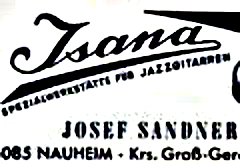
From 1951-1974, Josef Sandner hand-built ISANA guitars in his 'Specialist Workstation For JazzGuitars' in Nauheim, Near Frankfurt, Germany.
The company name was a contraction of his own name and place of work: JSANA = J(osef) San(dner) Na(uheim). Historically the letter I and J are closely bound, and it is understood that the brand name was pronouced ISANA but styled as JSANA.
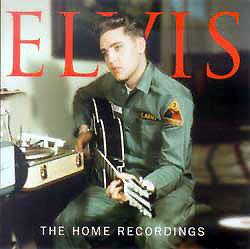
Several models were produced during these years, all seemingly of good quality, but the most desirable iteration is the stylish black-lacquered archtop owned by Elvis Presley whilst stationed a few miles away in Bad Nauheim, on the other side of Frankfurt, Germany 1958-1960.
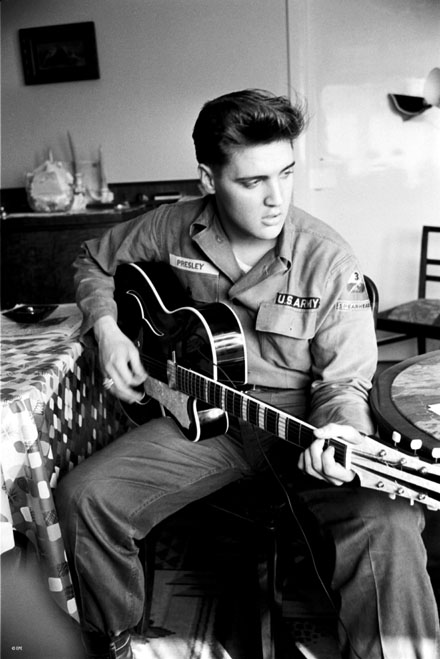
"Elvis' father Vernon bought an 'Isana' guitar at the music shop 'Hummel' in Frankfurt on 12-20-1958, a noble instrument finished with black piano lacquer at the price of DM 225,00, and gave it to Elvis as a Christmas present. Later Elvis added a floating neck pickup to the instrument and played it through a Dynacord amp."
(Quotation translated from http://www.elvisforever.de)
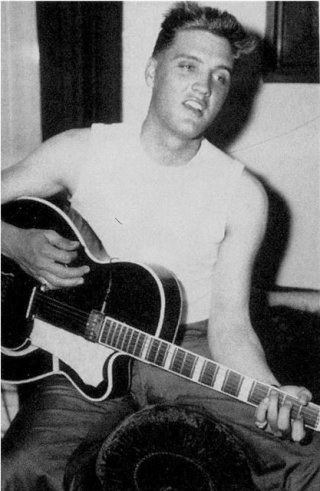
For many years (pre-c.2004) this guitar's maker was notoriously unidentified in the Elvis fan and guitar collector worlds.
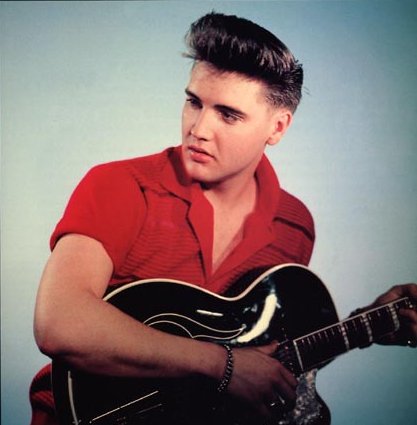
In 2006, an Isana alleged to be Elvis' personal guitar came on the market, being at that time mistakenly termed a 'Jsana' through a mis-reading of the company's admittedly confusing logo. A fanciful press-release from the time claimed it to be 'possibly the only remaining example in the world'. This guitar with it's dubious provenance (and brutally added humbucker pickup!) repeatedly failed to sell when offered by Heritage Auctions. It was subsequently loaned for display at the Memphis Museum of Rock 'n' Soul.
The above guitar is not unversally agreed to be Elvis' own guitar. Scotty Moore wrote that Elvis gave his Isana along with another guitar to two young fans, and that he autographed them. It would appear more likely that his personal one has been on display at the newly-opened Elvis Presley Museum Dusseldorf since 2012 (below)
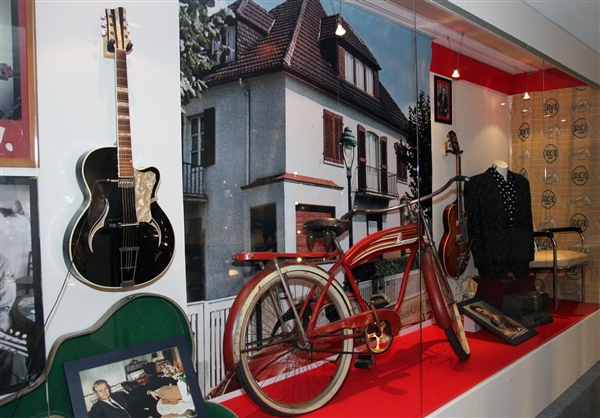
General Isana Dating Information:
Month and Year of manufacture is ink-stamped (quite small!) inside the Archtop models, on the inside face of the backplate, directly beneath and visible through either (or often both) soundhole(s). It is usually very faded and faint, and hard to locate and read - try using a very bright torch!
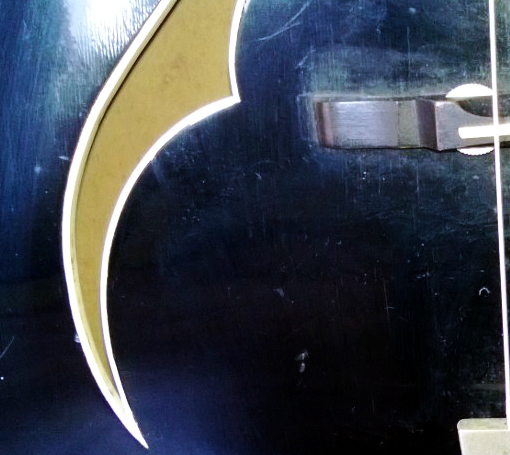
Since the known production date of the 'Elvis' model spans 5 years (OKT 1956- MAI 1961), it seems a reasonable ballpark figure guesstimate that perhaps 100 examples were completed per year for an approx total of 5 years = 500 of this model may have been built, with perhaps fewer than one fifth of that (ie under 100 examples) in black. The most common finishes appear to have been the Red-black or Orange-Black Sunburst, with slightly fewer in Tobacco Brown Sunburst or Orange Sunburst. Only a very few examples (I know of seven including Elvis') have surfaced in Black finish. None are yet known to me in Blonde or Natural finish.
***DO PLEASE NOTE that these numbers are pure speculation based upon what I imagine a small (under 6-person) team could produce, and could easily be inaccurate by a factor of 10 in either direction!!!***
Earliest known black 'Elvis Model", dated OKT 56
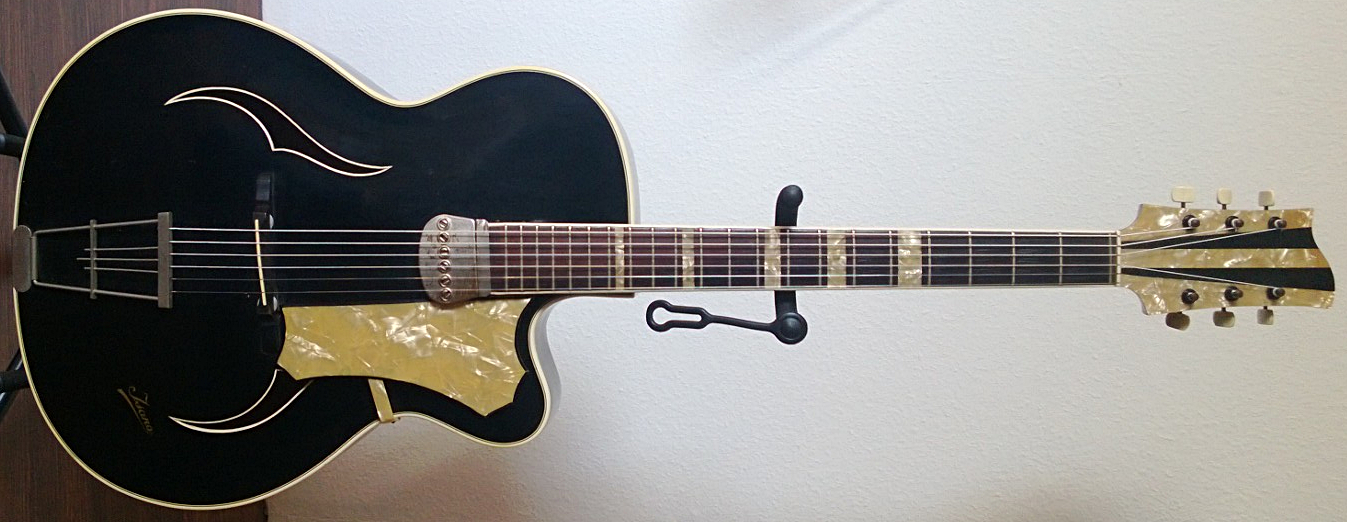
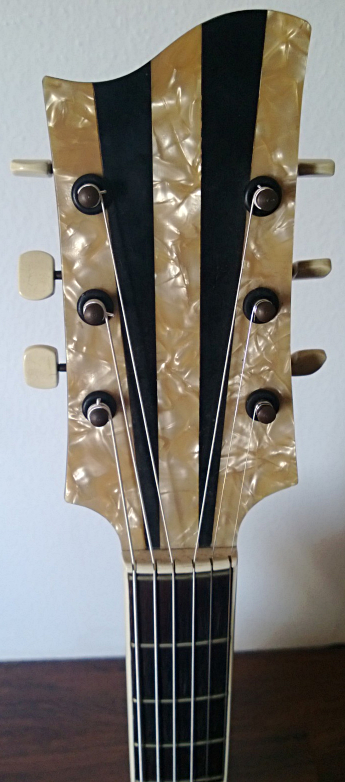
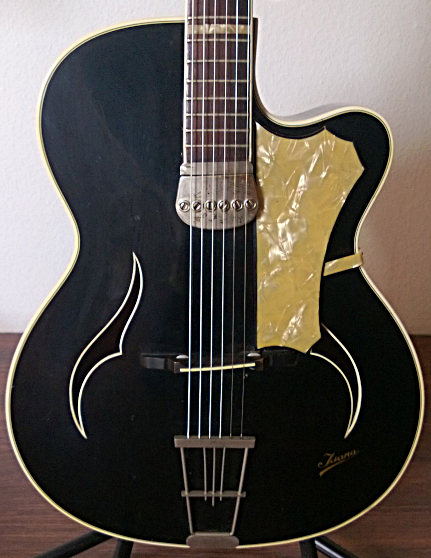
The below example (my own) shows the production date, 'NOV 1957'
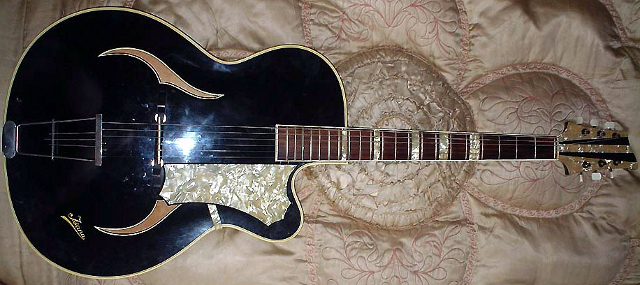
The next example I bought and sold before I knew about the internal date stamps. A close comparison of these two examples revealed different curves, points, and general geometry of the headstocks, while the body shape, bindings and other dimensions were very consistant.
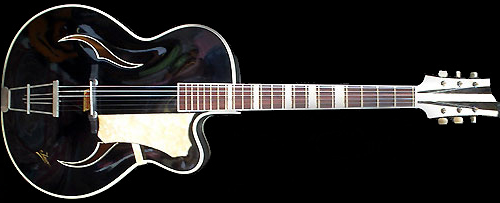
This 'Black Rose' sunburst example bears a date-stamp 'OKT 1959'
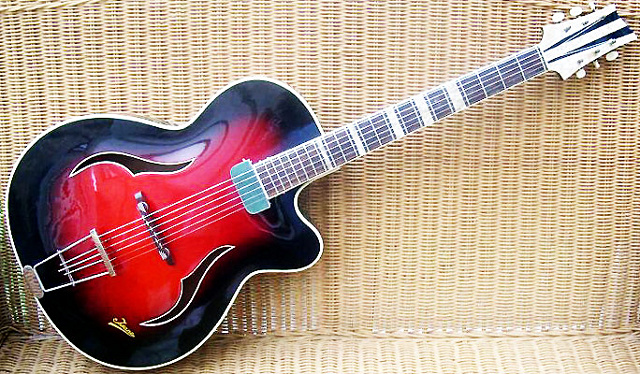
Other ISANA Archtop Models, and Speculative Timeline 1952-1974
Josef Sandner is believed to have produced these guitars either alone, or in a small-workforce workshop. Despite the coincidence of a shared family name, he was not related by birth to either Franz Sandner of FASAN Guitars, or Alois Sandner who made ALOSA Guitars. Speculation and evidence abounds as to there having been collaborations, shared suppliers, and mutally assistive business dealings between these three during this difficult time where -fuelled by their shared goals, relative geographical proximities and broad stylistic similarities - 'everyone helped each other'. However there are many distinct yet subtle differences in the details of the output known from these brands...
That said, there are also many other similar guitars that display 'Isana-like' features, but which bear no branding, or a variety of other names, such as 'Oscha', 'S und S', and even Hopf- It was (and still is!) common practise for a distributor or even the original seller's shop to add their own perfectly professional-looking decal labels to guitars in these days, so the situation is by no means clear cut.
The following photos were archived largely from ebay listings during the 'early' days of the internet, ca 2002-6, with further images added as collectors have sent them to me. Below, I try to make sense of the chonology of these models... but PLEASE NOTE! Year(s) of production as claimed may refer to a model produced for several years either side of that date!
The method I used to develop the following chronology: Pictured guitars are sorted first according to known date stamps, then similar but undated examples were added in as and where the features correlate, with consideration of how this would relate to the stylistic changes with popular worldwide trends in guitar design, ie: full body jazz guitars> cutaways added> thinline bodies with floating electronics> move to electric beat guitars and budget plywood-topped models> double cutaway thinline electrics
Note: When I assembled the following 'chronology', I believed the date of manufacture could be inferred by the style of tailpiece, but it appears Plain, Lyre, & Harp forms were all readily available from the same supplier continuously throughout the 1950s/1960s. Since the modest cost of a plain unit would be tripled for Lyre or Harp form, it is more likely to be an indication of the manufacturer's designation of Standard or Deluxe model. (Also, one should bear in mind that these tailpieces are very easily swapped!)
c.1951-54
Medium-bodied 'Deluxe' Non-Cutaway Models
Glitter Headstock Veneers with thin-stripes, Lyre-form Tailpiece
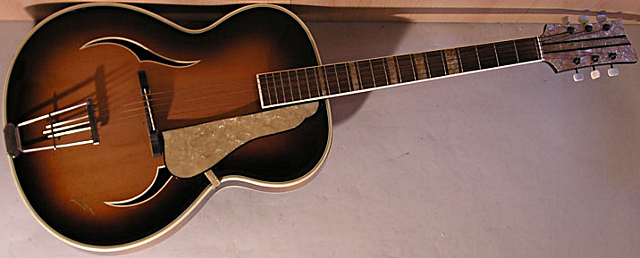
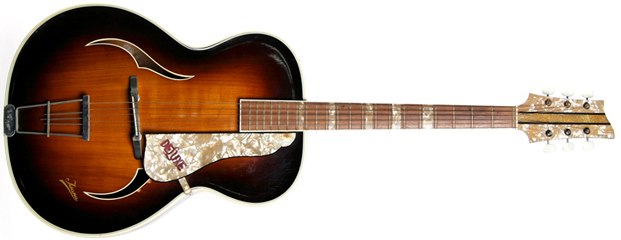
c.1953
Cutaway Models introduced
Large-bodied example below, glitter on headstock, but thin stripes simplified
pickguard shapes inconsistant:

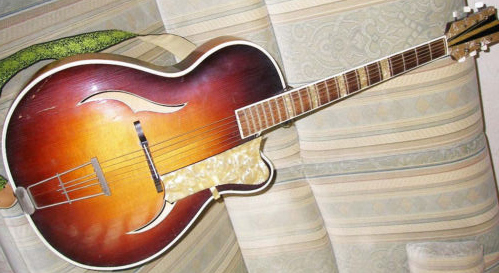
Dated Dez 1954 - Body Stamp
c.1954-56
All-Pearloid Headstock Veneers
Non-Cutaway Model
Dot-Markers as used by Fasan, simplified headstock veneers as per mid '60s budget models, traditional f-holes...

Dated Sept 1954? or 1956?
Headstock veneers come to a sharper point on this and some other earlier examples?
c.1956-58
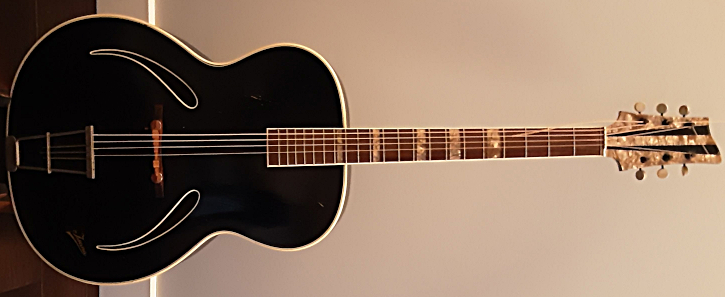
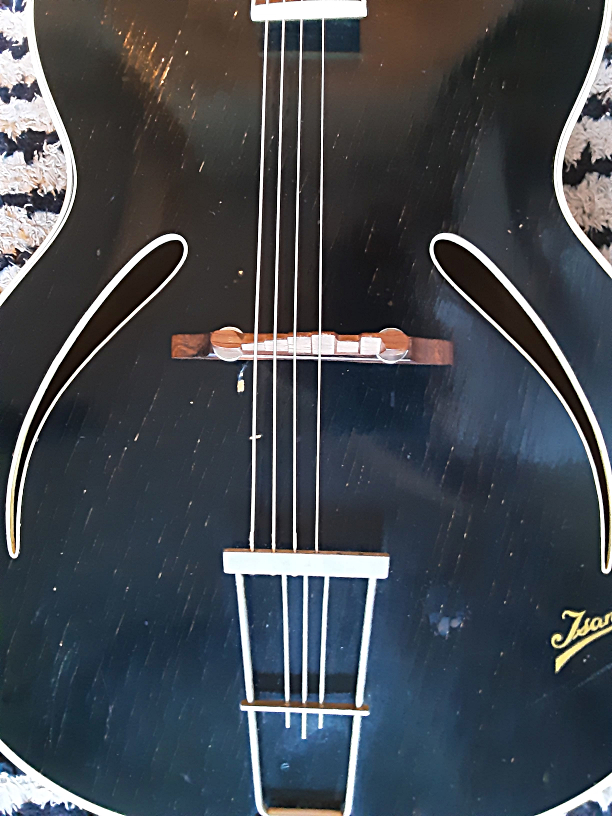
Black (above) and tobacco-burst (below) supplied with no date information
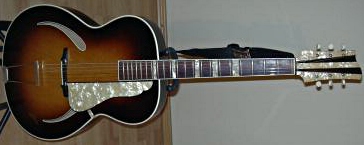
Photos supplied with unverified dates of "1956" above, and "1958" below
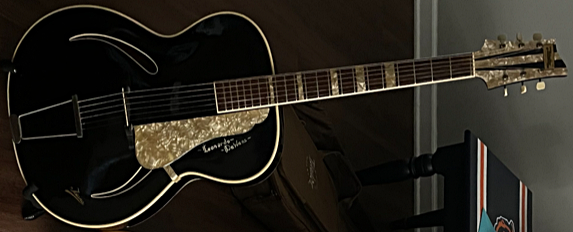
Similar cutaway model, but glitter on headstock, different tailpiece and pickguard shape. Also note 6 fingerboard inlays, including 3rd position:

1959
Big-bodied 'Deluxe' Single Cutaway Blonde Model
Glitter Headstock Veneers with thin-stripes, internal date stamp NOV 1959
Also note 6 fingerboard inlays, including 3rd position
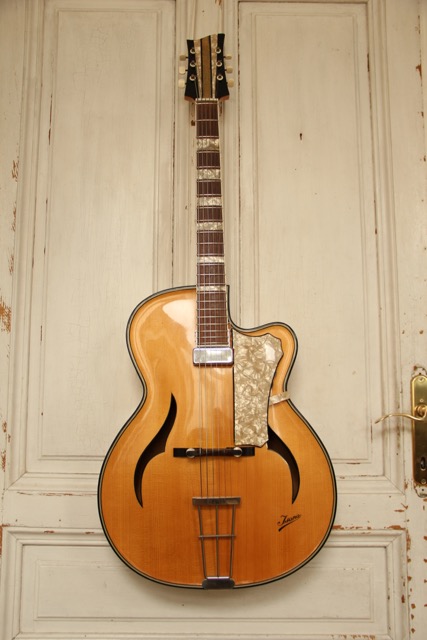
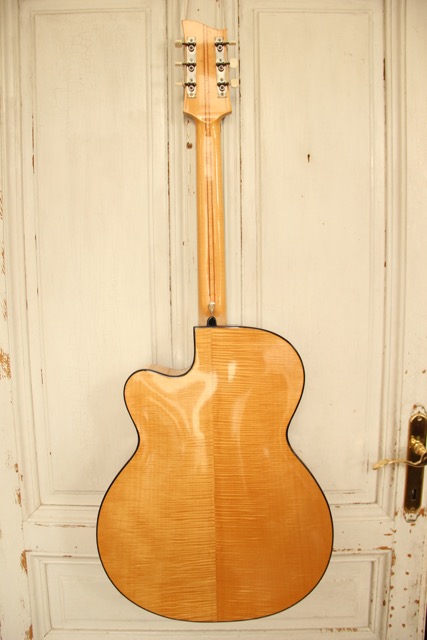
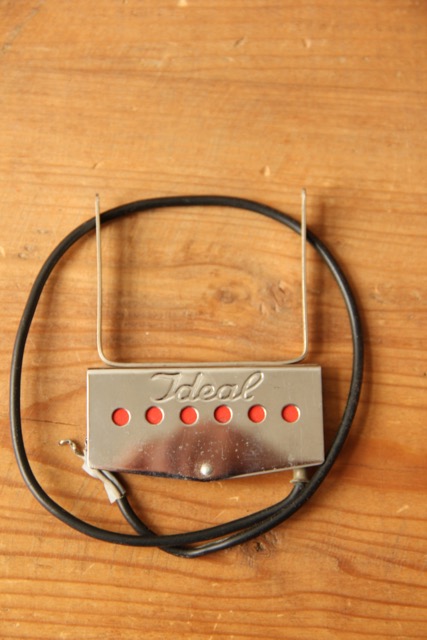
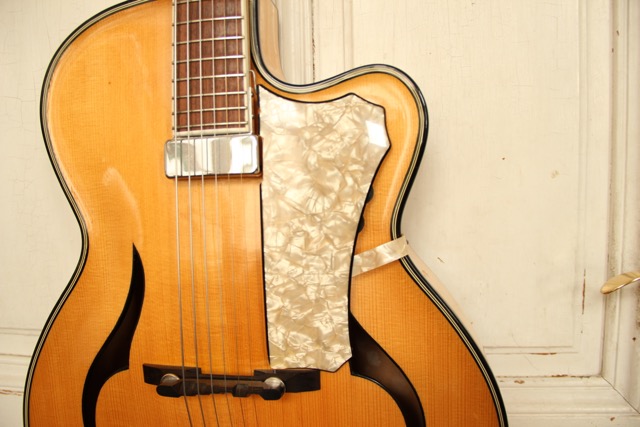
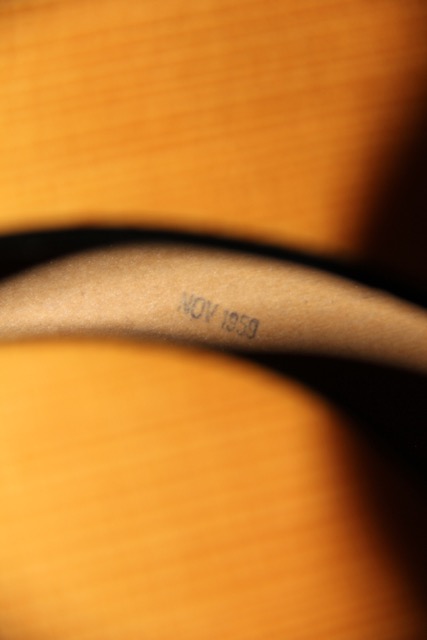
A non-cutaway example below with Harp-Shaped Tailpiece, could be earlier
This example also features 6 fingerboard inlays, including one at the 3rd fret position
1958-60
Lots of Elvis Models produced, model seems to stabilise.
Noted variations are few, but headstock proportions vary, possibly as a result of handwork involved. Earlier ones seem wider and more paddle-like, and may feature rounded or square Tuner Buttons, and may have black-painted, white, or bare metal tuner ferrules.
1961
Orange Bursts, and Stripey Sides
Latest confirmed Elvis Model Date-Stamped May 1961

An example in Black Rose finish bought in Paris in 1962
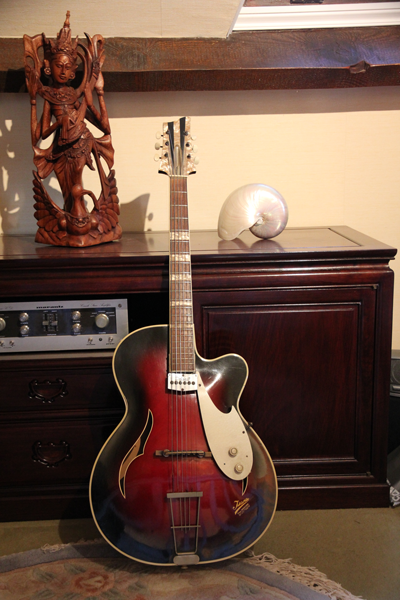
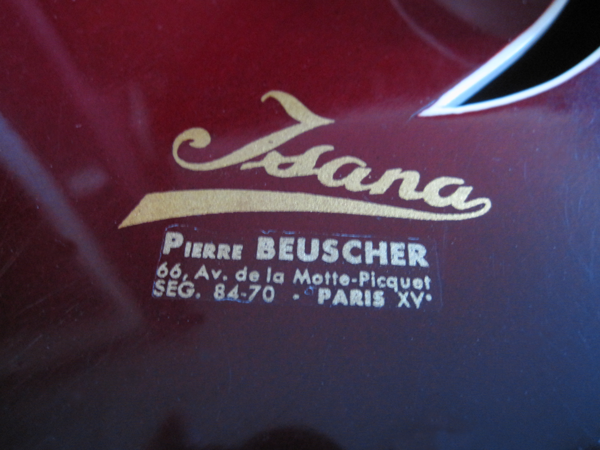
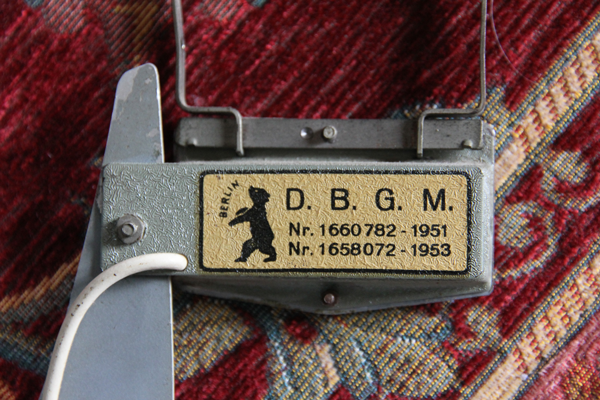
Trussrods introduced, recess covered by Long Metal plate (c.1961 only)
Electric Models Introduced, with floating pickups on Pickguard Assembly, neccessitating change of logo transfer position.
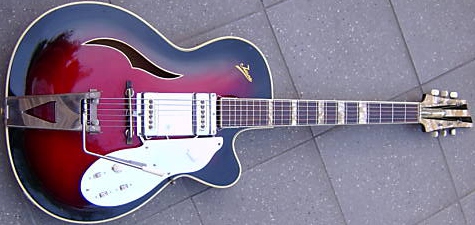
Soundholes take on a wider shape and (Ideal?) Pickups and Controls move from floating to mounted directly on top
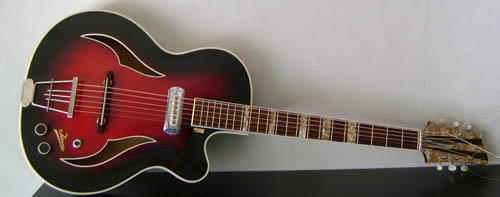
Another with stripey sides and unusual logo-positioning:
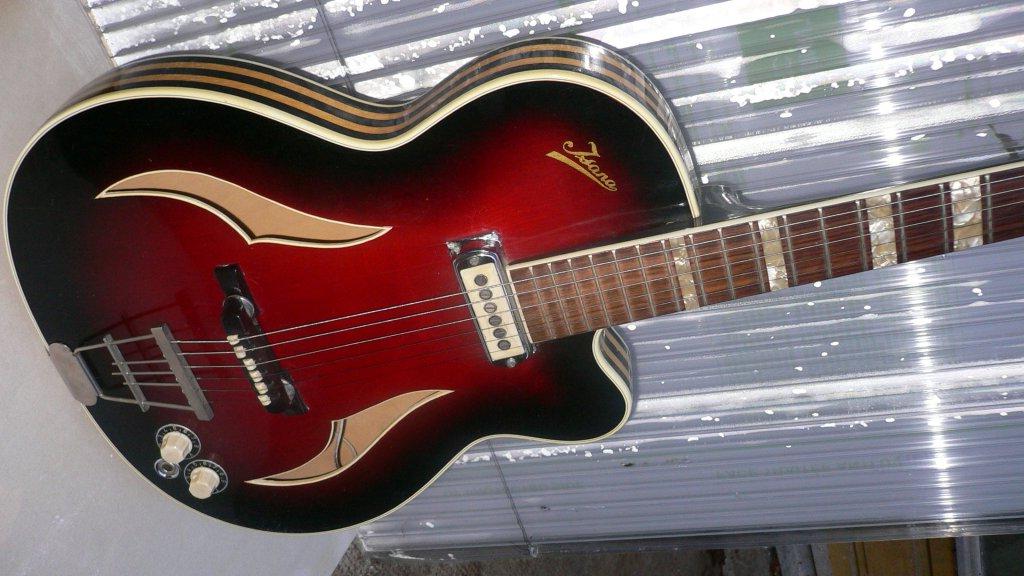
c.1962
Metal Trussrod Plate replaced by conventional Plastic Triangle
Headstock Shape Changed
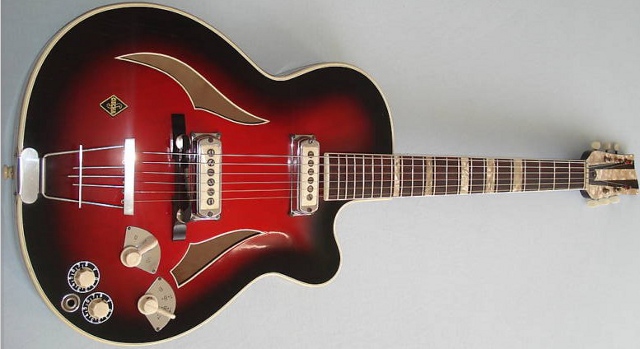
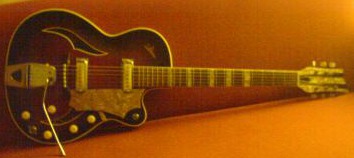
c.1963-6
Thinline Double-Cutaway introduced
Pickguards from now on are 'reversed' direction
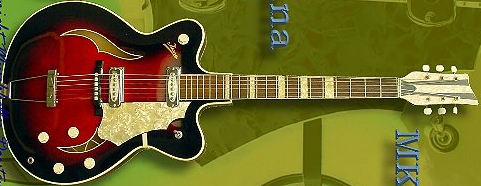
Headstock Veneers Simplified
Offset 'toaster' style pick-ups fitted
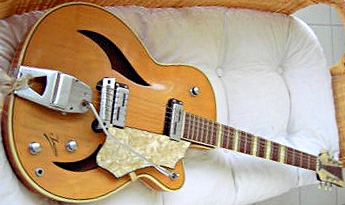
Budget full depth acoustic models: simplified headstock veneers, unbound necks and soundholes. Probably with pressed laminated tops.
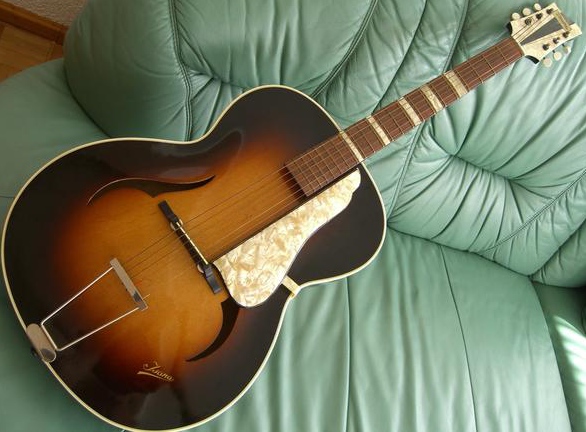
Examples confirmed Dated Jan 1962 and Aug 1966
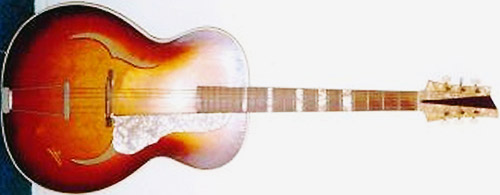
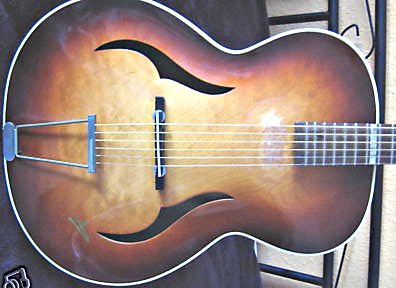
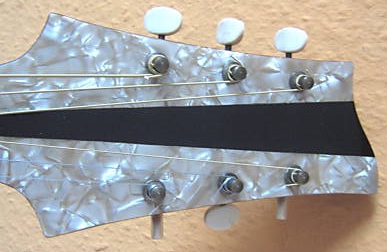
And another:
c.1967
Headstock Colour Inverted & Simplified again
Double 'toaster' style pick-ups fitted
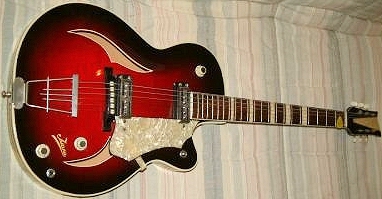
c.1968?
Headstock Decoration very minimal, carries Logo
Dot position Markers (even on third fret!)
c.1969
Headstock Veneers Ornate on this
Traditional 'f'-holes, triple pickup Double cutaway

Further reading:
CRICRIMUSIC.FR has a page which covers ISANA's electric solidbodies and basses HERE
